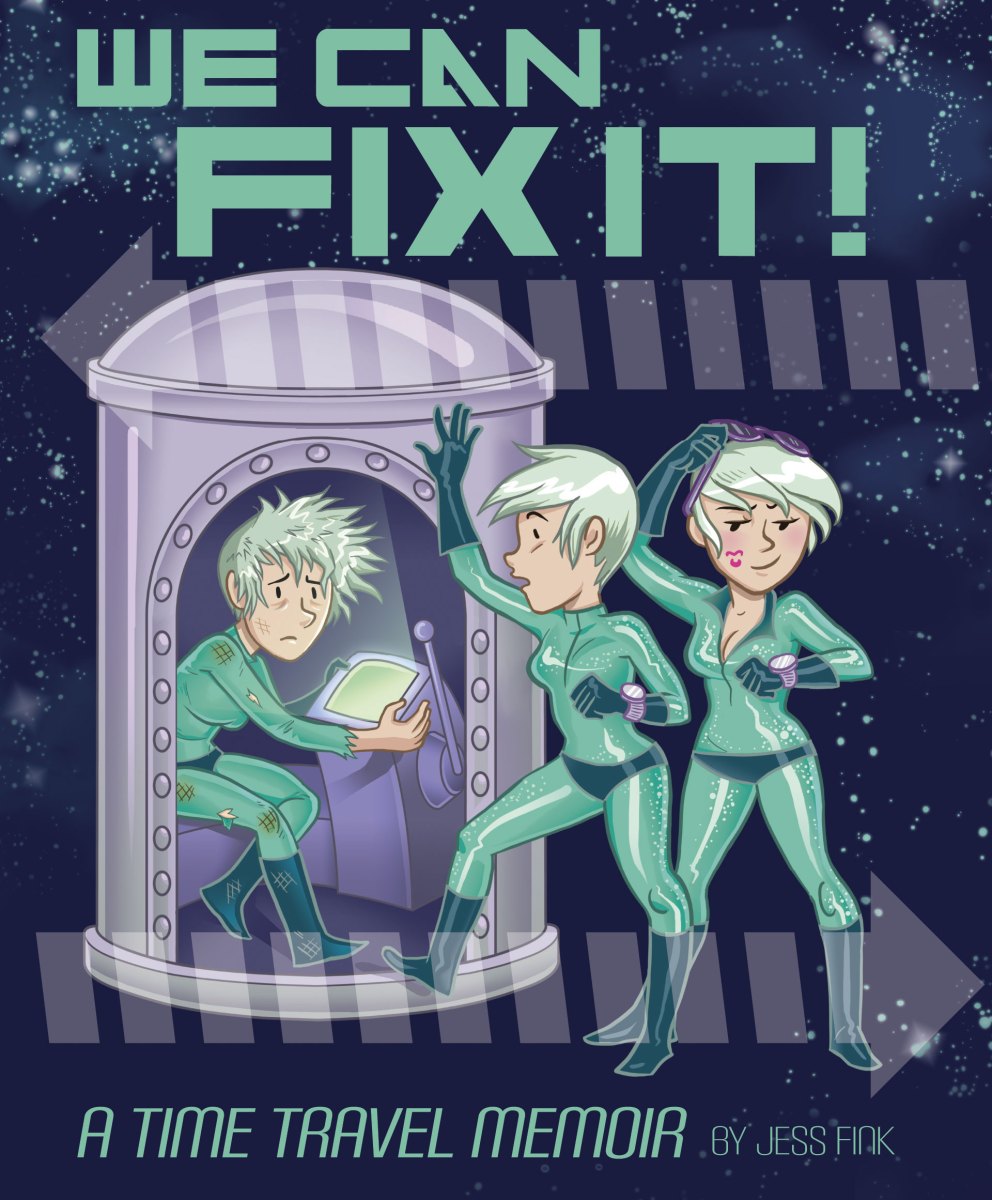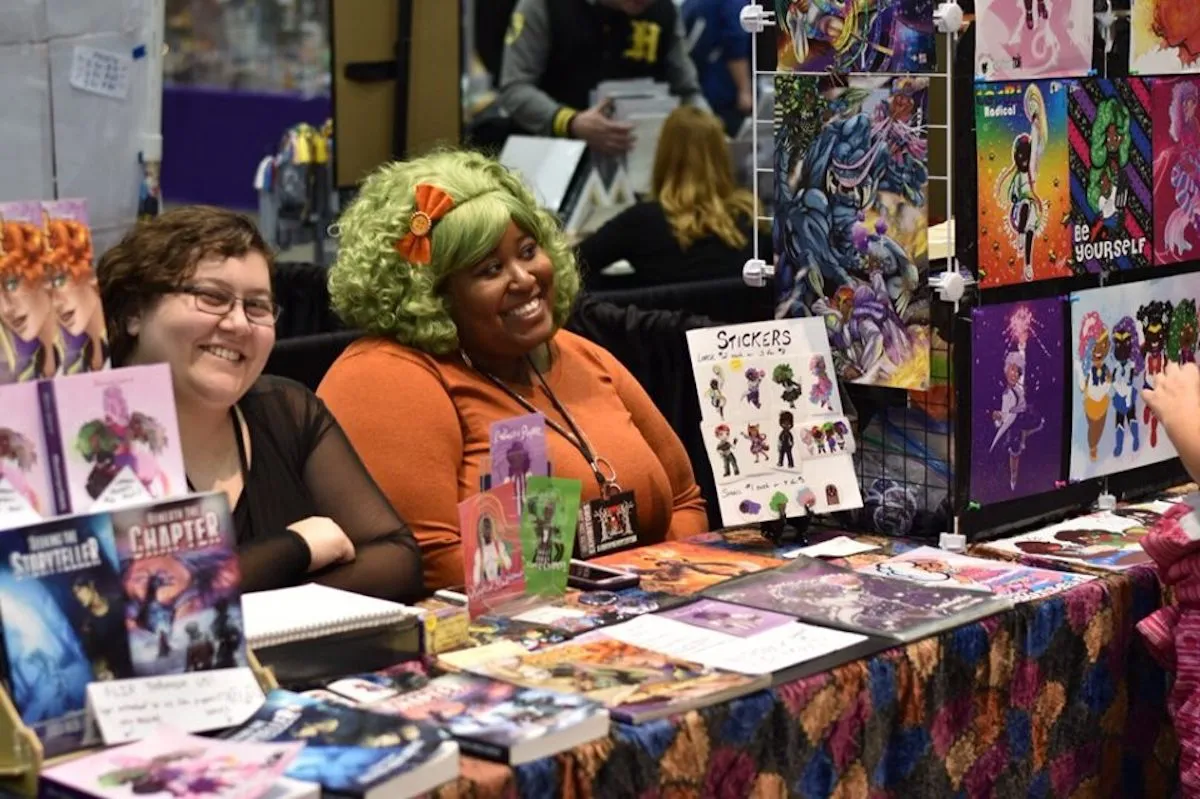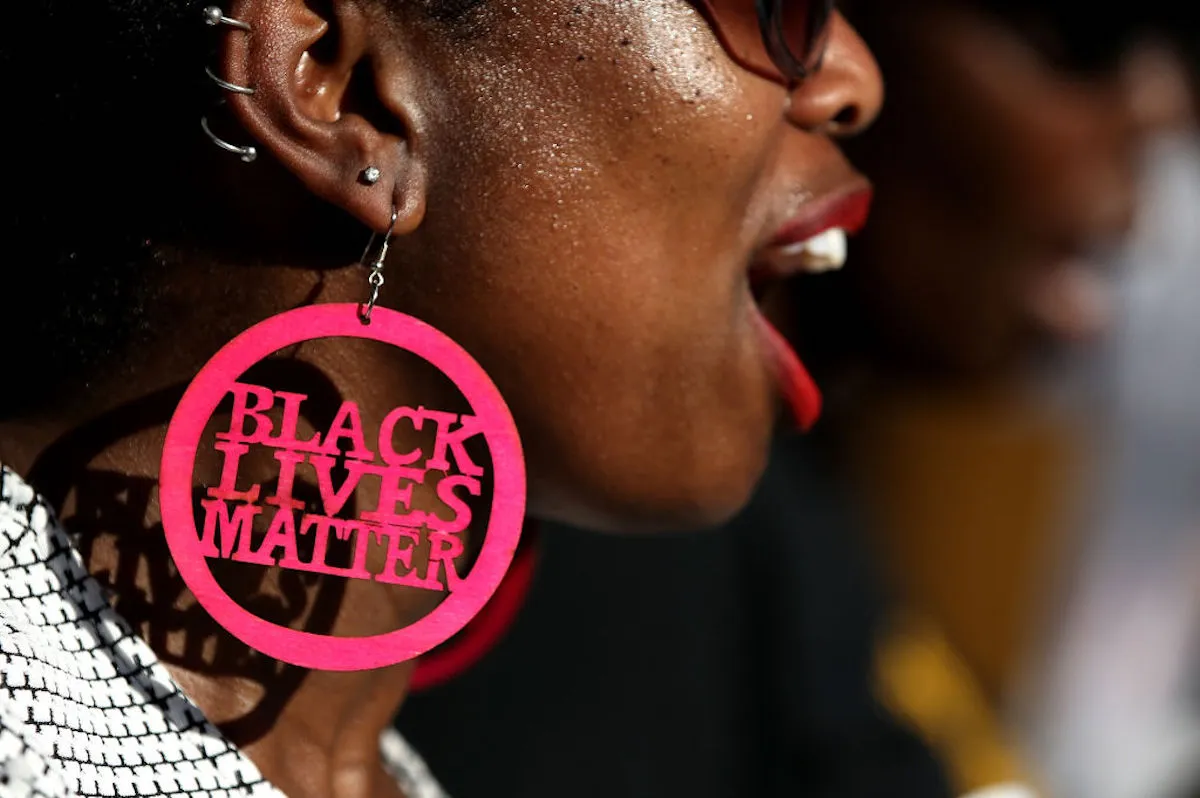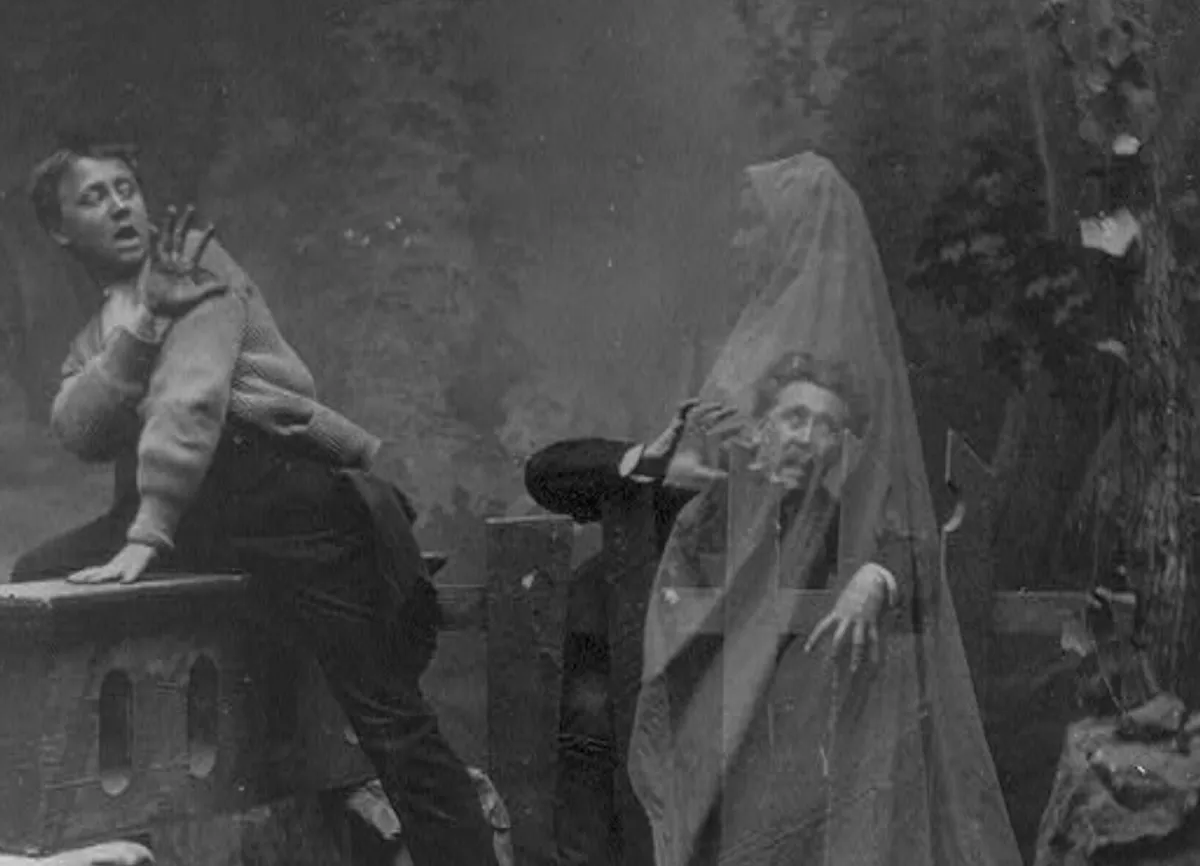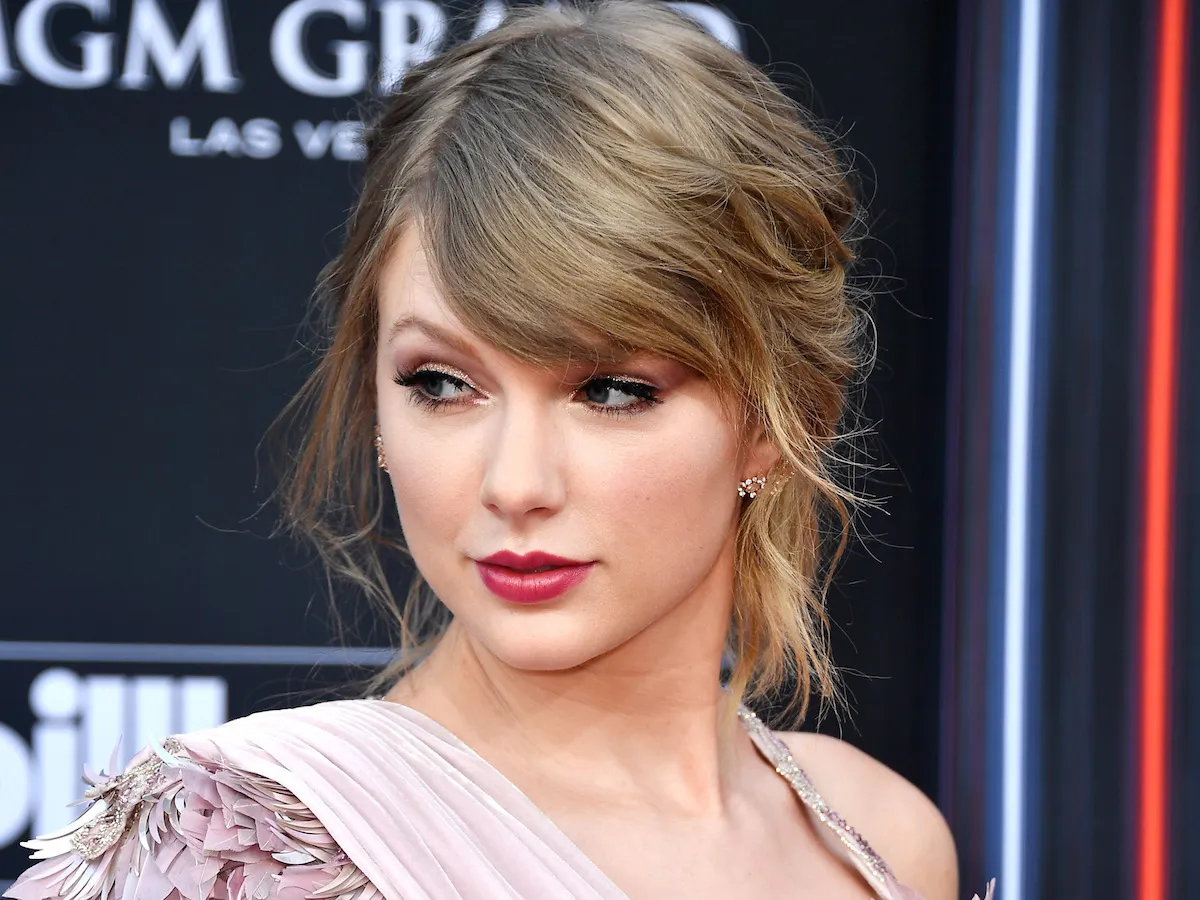Indie comic fans, get ready: Jess Fink is bringing sexy back…in time, that is. As a longtime fan, I was thrilled to get a chance to catch up with Jess to talk about her new book, time travel, Star Trek, female heroes, and the timeless inspiration of good smut.
Best known for the sweet and downright dirty Chester 5000 XYV web comic (link sometimes NSFW), published as a graphic novel by Top Shelf in 2011, Fink’s next book is delving into more personal territory (not that a desire for a loving sex robot isn’t personal). Her latest project, ‘the time-traveling memoir’ We Can Fix It, explores the silly and thoughtful revelations inherent in the well-trod trope of the time machine. In We Can Fix It, Fink from the future goes to visit Finks of the past, determined to relive her sex landmarks as she now remembers them. Inevitably, she gives into the temptation to offer advice on technique, leading to advice on pretty much every area, and era, of her former self. But Past Fink is resistant, stubborn, and sometimes beyond help, leading Future Fink and her spangly suit to discover important things about herself, regardless of the time.
If you remain doubtful that a sci-fi heroine using a powerful device solely (at first) to perv on her past awkward sexcapades can be both touching and poignant, then has We Can Fix It got surprises in store for you. As her avatar zips around dispensing wisdom (“Don’t worry, your future is sexier, but your past is sexy, too!”), makeouts, hope, and a pervasive desire for a clingy futuristic bodysuit, Future Fink realizes that, try as we might, we can’t fix everything. Fink balances the heavier matter of feeling protective of our younger, more naïve selves with a deceptively glib humor, not to mention her signature cartooning style, at once broad and exaggerated, but still achingly personal.
Zoe Chevat: What was the flash point of inspiration for We Can Fix It?
Jess Fink: People are always thinking about regret; at least I know I am. There’s this great Softer World comic that goes, “I spend enough nights lying awake thinking about the past. Living forever would be hell.” There’s always some small incident that really meant nothing, but it sticks in your mind and you wonder why you are still thinking about it 10 years later. I began to think about all the awful, sexy, awkward, exciting things about being young, like having NO idea about sex or how to give a blowjob. Talking to friends who felt the same way, wishing we could go back and teach our younger selves a thing or two. Wishing you had someone to tell you what to do. There was a lot of spur-of-the-moment scribbling in my sketchbook. Kate Beaton did some inspiring comics talking to her younger self. Also, the inspiration just came from loving time travel stories. I feel like they’re really human sci-fi stories that can more often be about the mistakes people make.
It’s a fun thought experiment, imagining how you might react to seeing your future self – or past self- at different ages. Were you surprised at anything you came up with for the other versions of yourself?
I don’t know if I was surprised, exactly. It’s fun to fantasize about. When I was younger I remember fantasizing about what my older self would be like. I’d write letters to my future self that make me laugh and cringe a little when I read them now. All little kid me could think about was wanting to have really big boobs!
It’s weird, because when I was a kid I wanted to know so badly who I’d be when I grew up and what I’d have to tell me about life as an adult. At the same time I hated the idea of growing up. I couldn’t comprehend being an adult. I couldn’t comprehend being in a relationship or having a job; you cringe at those responsibilities when you’re little. Now I think about what I would say to younger me, we’d be extremely different people but I’d bet anything we’d still laugh at the same fart jokes.
Obviously, We Can Fix It touches on some personally sensitive memoir material. What was behind your decision to share your private history in such a public way?
I just felt like I wanted the book to be honest. I wanted it to be relatable and funny, but to also honestly talk about things I would change. Bad things happen to everyone, especially when you’re a kid, so these are private things I’m talking about but they aren’t foreign. It’s hard, but I think it was a good experience to write about that stuff. I could have written a straight-up memoir and would like to some day, but I think using time travel made it easier and probably a bit more fun, less draining or heavy.
Have you gotten or do you anticipate any fan feedback relating to those experiences?
A long time ago I was posting the early versions of the book to my livejournal, I had a lot of feedback from people, especially about those moments. It was something nice that kept me going.
We Can Fix It is quite negative regarding formalized art education, at least from your time at school. Would you say it’s a matter of the way you were being taught? Is there a ‘right’ way to teach art?
Well, some moments were negative, but some were also wonderful, I wouldn’t take back my time in art school. It was a unique experience, there are things I would and wouldn’t want to change. Some classes I took were really terrible, and when you’re a kid you don’t realize the mistakes you’re making. I didn’t think about how I could have optimized my time at school. If I was in a bad class I should have quit that class and taken another that was more worth my time and money. When you’re a kid you don’t think, “this is bad for me, I’m wasting my money.” You’re not hit with that reality. I just sat there like I had in high school and didn’t think I could change my situation much.
If someone is thinking of going to art school but doesn’t have the money, I would urge them to think realistically about how much they can put into it. You have to remember that it’s your money and your time, and you are coming here to learn something, to get better at a craft. The teachers you get can be a gamble. I had a few super sexist teachers. There was this one guy (whose name I won’t say) who would make sexist comments about the models we were drawing, about their physical appearance. It was agony!
Art school can be a great experience, but, when talking about money, I would recommend going to a smaller school for art and really carefully selecting what you want to learn.
But I also met some AMAZING teachers at school who influenced me so much and who I still talk to, like Tom Hart. I’ve known Tom a long time; he gave me thoughts on We Can Fix It and even helped me edit it a bit. When I was in college, he used to throw 24 hour comics parties and invite students. He’s the nicest guy, and such a good teacher. He has this way of finding out what a student is trying to say and understanding it so he can help them make it. He’s started his own school down in Florida now called The Sequential Artist’s Workshop (S.A.W.), and if I was a kid interested in going to school for comics now I’d probably go there.
In We Can Fix It, you show yourself (and yourself) discussing the merits of picking up Japanese comics first. Was manga what cinched your interest in comics as a medium? What about it captured your attention when you disliked superhero comics?
Sailor Moon was the first anime I saw that hooked me, it blew my mind. I wasn’t interested in superhero comics, [because] as a girl I had this feeling they weren’t meant for me. It was all insanely muscle-y men and waif-like women who looked physically impossible.
As a kid I was crazy for Looney Tunes, Teenage Mutant Ninja Turtles, and video games, and I remember feeling extremely disappointed that none of those things featured girl characters as part of the action. I had an obsession with Gadget from Rescue Rangers because she was so cool and smart, and a mechanic; she was part of the team! I loved boy characters, but I just wanted a few characters I could relate to as myself. I used to draw lady versions of Sonic the Hedgehog and pretend Knuckles was a girl when I played. So, finding Sailor Moon was just amazing. It felt like it was made just for me. A whole team of girls saving the day themselves!
I also think super hero comics looked too intense to me, like they took themselves way too seriously. I read some American comics, but they were more alternative. I always gravitated towards things with humor in them, which is why my other anime obsession was with Rumiko Takahashi‘s work, mostly Ranma 1/2 and LUM. They were so goofy and ridiculous, and a little bit sexy, too. The Ghost in the Shell movie was another favorite; the Major was so tough and badass. Finding those characters made me feel like I didn’t have to fantasize anymore.
The exuberant expression of sexuality is a consistent theme in your work. Can you speak to that, and its personal importance to you?
People sometimes say to me, “you’re so brave to draw sex”. I never thought of it as bravery, because I wasn’t really scared of it. I just felt like, “Sex is fun!” I’ve always wanted to write and draw about it.
Not that I was always shame-free. I remember when I was a kid and I suddenly realized I could just draw any dirty thing I wanted, holy crap! I’d draw it and then, quick, before anyone could see, I’d scribble it out, rip it up, and flush it down the toilet! Just freaking out and thinking “what if my Mom found out I drew a boob or a wiener!? I’d be in so much TROUBLE.”
Eventually, when I was in high school, my parents got a computer. Since it was theirs, it was very tricky looking up dirty things but I’d find ways. Live action porn made me uncomfortable, and, at the time, there wasn’t the variety of erotica online that there is today. I remember finding out about a manga called Bondage Fairies, I don’t know how I got a copy of it, but I did and I loved it. Still, I felt like I knew what I wanted, but it just wasn’t out there for me to read. I wanted stories, I wanted female characters that felt real. So, I thought if I couldn’t find it I’d just write my own, you know?
What would you say are your formative literary/graphic erotic influences?
Tom Hart gave me Art Spiegelman‘s Tijuana Bibles collection when I was in college, and it was fantastic. I was so amazed by the history of it. Erotica was illegal back in the 20’s, so these little dirty comics were passed from person to person. I knew then that I wanted to make something old fashioned, ornate and bawdy. Molly Kiely is another artist whose comics I desperately loved. She has a slew of comics published by EROS, (Fantagraphics’ erotic imprint). My favorites were Tecopa Jane and That Kind of Girl. They’re just so fun and sexy, and sort of poetic. I recommend them. I think a lot of EROS stuff wasn’t well known because it was considered too dirty and not mainstream back in the 90’s. Molly’s comics are so positive, bright and unabashed. A lot of sex comics are dark and creepy, and kind of get off on the “wrongness” of it. I tend to like stuff that’s more fun.
Science fiction elements, whether it be steampunk robots or time machines, is another favorite of yours to include. Why, in your opinion, is science fiction in particular an effective vehicle for the kinds of stories you want to tell?
I love science fiction. I hate when people turn their nose up at it, I think they see it as childish, maybe because they are only seeing overly popularized things. There are so many science fiction stories that use the genre to deal with really human issues.
I didn’t watch Star Trek: The Next Generation when I was a kid, I was too busy being into cartoons. But when I started watching it a few years ago I was like, “this show is so good. Why didn’t anyone tell me?!” A lot of the episodes use science fiction as a way to talk about social issues and human nature. Those are the best science fiction stories. I can’t really get into sci-fi that is superficial, just showing off with special effects, crazy concepts and laser fights. There has to be a heart and point to it, for me.
Finally, being known first primarily as a web artist, and having now had your work transposed into printed media, how do you feel about the differences between the two in terms of both reader experience and artist’s exposure?
Well, I love print, I love having an actual book. It’s great having a book you wrote in your hands, even publishing books myself was a good experience. But I’m so glad the internet is there, even though it can be terrible sometimes. It gives me a community where otherwise I would not have one. It’s great to be part of that and to share with other creators, to be encouraged by one another.
I think people will always want to hold onto something, whether it’s a book or a shirt or original art. I certainly don’t look down on the internet like some do as something that’s taken that away. In fact I think it’s made it that much more accessible. I don’t know what I would have done without it. I saw this documentary about the ‘80s underground cartoonists scene, they were on the street handing their comics out to people. I can’t imagine that, but in a way the internet is similar. It’s great we have this thing, this tool, that connects us.
~
We Can Fix It, by Jess Fink, is available in May 2013 from Top Shelf Comix. It is rated for Mature readers (16+) Follow Jess’ work at http://jessfink.com/, on her Tumblr, http://jessfink.tumblr.com/, or Twitter @JessFink
Zoe Chevat is a comic book artist, illustrator, writer, and animator. She has an MFA in Film and Animation from CalArts, where she was part of the Experimental Animation program. Catch her work in the upcoming The Reason for Dragons, by Chris Northrop and Jeff Stokely, and in Moon Lake Vol. 2, both from Archaia Entertainment, or follow her on Twitter @ZChevat



